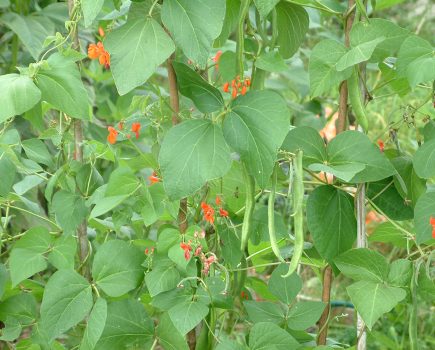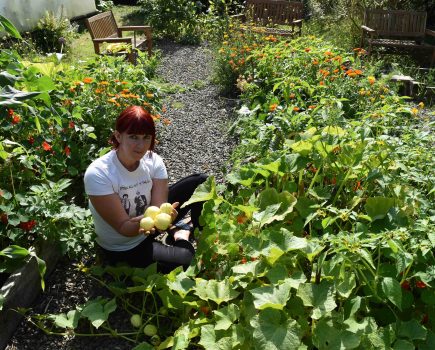Alan Beat looks at the pros and cons of keeping animals on a smallholding.
Smallholders choose to keep livestock for one or more of four basic reasons: to produce meat and other foods such as milk or eggs; to derive income from the sale of stock or their products; to manage land for wildlife, forestry or other reasons; or simply for the pleasure of keeping them. There are two sides to every coin, so let’s take a look at the pros and cons of keeping livestock – starting with the advantages! Food from grassMuch of the available land in the UK is not suited to growing arable or horticultural crops by reason of climate, slope, soil type, drainage and so on. However, a wide range of grasses and herbaceous plants readily grow on such land. Ruminant animals can digest these, so by husbanding these on the land to graze, we gain indirect access to the crop by eating the natural increase in their numbers. True ruminants, such as sheep and cattle, make the best use of grassland, and besides meat, yield other products including milk, wool, sheepskin, leather and horn. Geese, alone amongst poultry and waterfowl, will also fatten almost entirely on grass to yield their meat, feathers and down.
Food from grass plus wastePoultry and most waterfowl are foraging omnivores rather than grazers, searching amongst the leaves and roots for the myriad small creatures that grassland naturally supports. They do eat some greenstuffs, but gain mostly from this indirect harvest. Research has shown that, above a critical stocking density, the invertebrate population is unable to support the level of predation and crashes, leaving the foragers almost entirely reliant upon feed imported from elsewhere; but given true free range, they will find much of their food from grassland. This can be supplemented by fruit, vegetable and cereal waste considered unfit for human consumption to yield a harvest of meat, eggs, feathers and down.
Food from weeds plus wastePigs are omnivores but with a broader repertoire of feeding strategies. They don’t just graze or forage, but dig up and consume the entire plant, roots and all, plus any small living creatures found on or in the soil such as beetles, mice and earthworms, and will also eat carrion. They also thrive in open woodland, where they will clear the undergrowth of nettles, brambles and scrub, and fatten on beech mast, acorns and the like. Supplement this with waste food, as for poultry, and the pig can yield a handsome return of pork, ham and bacon from rough ground that is cleared, ploughed, manured and thus greatly improved in the process.
Safe food and fresh foodHarvesting meat and other products from livestock raised on the smallholding enables you to control what goes into your food.Home-produced milk or eggs can be enjoyed at their very best quality, being so much fresher than the shop-bought equivalent. Personally, we also prefer our meat to be very fresh, and only leave it hanging long enough to firm up sufficiently for cutting – but if you like it ‘higher’ you are free to choose!Food securityfood security is a serious issue. Food from livestock kept on the smallholding may form a significant part of your own strategy to be self -sufficient in this respect.
Food milesDramatic rises in the cost of oil have raised awareness of ‘food miles’ and reminded western consumers of the prodigious distances that even food grown in the UK routinely travels. Smallholders who eat the products of their own livestock can know that their food has travelled the shortest possible distance from field to plate, with minimum carbon footprint.
Environmental managementNearly all of the landscape that we value highly today has been shaped by human influence, and mostly by agriculture. Left to its own devices, most land in the UK will revert back to the woodland that once covered it. Many other types of open landscape have evolved under centuries of grazing by livestock and, while cutting, burning and other human interventions have a role to play, grazing is the essential component to maintain their condition and biodiversity. The wildlife trusts and other conservation bodies are increasingly using controlled grazing to improve the wildlife value of neglected land. The hedges, walls, banks, gates, fences, ponds, barns and small farmsteads that almost define our rural landscapes are all directly associated with grazing livestock; and where such farming has been displaced, the collapse in biodiversity and landscape value is starkly evident. Smallholders have a role to play in maintaining the patchwork landscape that we all value, and positive management has been widely shown to make good financial sense, with environmental stewardship now being promoted as a realistic source of income.
Rare breed conservationSome smallholders will wish to help conserve rare breeds of farm livestock – breeds that have become rare because they do not suit modern methods of intensive commercial farming. Naturally, one of the best ways to support this important work is to keep some on the smallholding, and, anyway, such breeds may offer the very qualities that best suit your personal choices, such as hardiness, temperament or flavour.
Pleasure Some smallholders do not seek self-sufficiency in food but choose instead to keep non-commercial animals on their land, mainly or wholly for pleasure. These may be simply pets, or they may also serve a secondary function; for example, grazing a large paddock to spare the owners the chore of mowing it; or providing an annual harvest of wool for craft work. These personal choices enable land to be managed by grazing without the imperative to produce food or income.
Food for the soilFinally, we must consider the most valuable, and most overlooked, by-product of keeping livestock – their manure. ‘Chemical’ farming is ultimately unsustainable. By contrast, organic mixed farming combines arable cropping with livestock husbandry, and can be sustained indefinitely.On a smallholding, nowhere is this seen more clearly than in the kitchen garden, where fertility of the soil is maintained and improved by copious amounts of manure. Of course you can make compost and leaf mould, run wormeries and comfrey beds, grow green manure and cover crops; but as William Cobbett observed in Cottage Economy, first published in 1821, without animal manure ‘the cultivation of the land would be a poor, a miserably barren concern’.So the self-sufficient smallholder needs livestock to drive the production of vegetables and fruit from his garden. Without them, he is reliant on imported manure that is likely to contain residues he would prefer to avoid. Organic farmers do not generally part with manure, because of course they recognise its value. So keeping livestock on the smallholding is the only realistic way to ensure the supply of wholesome manure to feed your own food crops.Now a look at the drawbacks.
TiesThere is no escaping the fact that all livestock are a tie, and that a competent person must attend to their needs once or twice a day, every day. This reduces the time available for other activities and restricts your freedom to be away from home. A day out is limited to the free time in between livestock commitments – especially restricting in the short daylight hours of winter. A night away requires advance planning plus the assistance of other people, while trips of longer duration become progressively more difficult to achieve.Finding someone to shut away a few hens in return for eggs is one thing; finding someone able and willing to milk a goat or house cow may be quite another. As a friend who grew only fruit and vegetables on his smallholding once observed: “I can always leave a carrot in the ground!”
WorkloadAll livestock generate a workload of one form or another for their keeper. Stock out at grass must be seen at least once a day, preferably twice, to check that all is well and to act upon any sign of problems. Housed stock will require feeding, watering and bedding in addition, while dairy animals will, of course, require milking. Over and above these twice-daily rounds will be less frequent tasks such as mucking out, harvesting or buying and storing feedstuff and bedding; and routine management tasks that may include foot-trimming, worming, vaccinating, weighing and shearing. Breeding stock generate high workloads at particular times of the year, such as lambing in spring, while fat stock need transportation to slaughter.KnowledgeThe keeping of livestock is accompanied by the responsibility to do it properly and to the best of your ability. Acquiring some basic knowledge before you start requires an investment of time and effort, for instance by attending training courses; the rest will follow with experience.
Cost The initial purchase price of livestock is not the end of the story – it’s just the beginning! Other directly associated costs may include the purchase and maintenance of housing, and handling facilities, and a trailer for road movements. Ongoing costs to take into account may include the purchase of feedstuffs, bedding, veterinary supplies and services, and disposal of fallen stock.
ContainmentStock out at grass needs to be kept within the boundaries of the smallholding, and within allocated fields so that grazing can be managed. This means fencing or stock proof walls or hedges, and sound gates, all appropriate to the stock being contained. LiabilityShould your stock escape onto the public highway, and directly or indirectly cause damage to people or property, you are legally liable irrespective of the measures taken to contain them – so no matter how good your fences, you really do need public liability insurance cover.
RegulationRegulation of the keeping and movement of farm livestock has dramatically increased over the past decade. Complex identification, licensing, recording and movement restrictions apply, and these are constantly changing. I know from the training courses that we run, and from the ‘helpline’ questions asked on the Smallholders online:www.smallholders.org website, that some people are deterred from climbing this bureaucratic mountain. Notifiable diseasesSome exotic animal diseases have a significant impact on international trade and by law, the authorities must be notified of outbreaks. In most cases the result will be compulsory slaughter of all your stock, with compensation paid to a standard tariff that may seriously undervalue pedigree or other genetically special animals. The trauma of a serious epidemic, such as foot and mouth in 2001, has been well documented. Huge and growing levels of international trade in livestock virtually guarantee that exotic diseases will continue to be introduced to the UK with increasing frequency in the foreseeable future.We have kept a range of livestock on our own smallholding for the past 20 years, and it’s difficult to see how we could manage it without them. Self-sufficiency is important to us, so the manure from our livestock provides essential fertility for our food crops. At the same time, we readily acknowledge the ties and responsibilities that livestock impose on us. The drawbacks to keeping livestock are surmountable, if the will is there. It is for every smallholder to weigh up the pros and cons, and to make their own choice.







